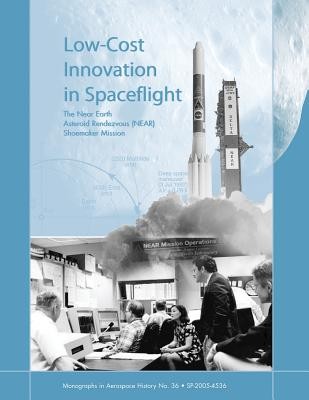
- We will send in 10–14 business days.
- Author: Howard E McCurdy
- Publisher: CreateSpace Independent Publishing Platform
- Year: 2013
- Pages: 86
- ISBN-10: 1493656538
- ISBN-13: 9781493656530
- Format: 21.6 x 28 x 0.5 cm, softcover
- Language: English
- SAVE -10% with code: EXTRA
Reviews
Description
On a spring day in 1996, at their research center in the Maryland countryside, representatives from the Johns Hopkins University Applied Physics Laboratory (APL) presented Administrator Daniel S. Goldin of the National Aeronautics and Space Administration (NASA) with a check for $3.6 million. Two and a half years earlier, APL officials had agreed to develop a spacecraft capable of conducting an asteroid rendezvous and to do so for slightly more than $122 million. This was a remarkably low sum for a spacecraft due to conduct a planetary class mission. By contrast, the Mars Observer spacecraft launched in 1992 for an orbital rendezvous with the red planet had cost $479 million to develop, while the upcoming Cassini mission to Saturn required a spacecraft whose total cost was approaching $1.4 billion. In an Agency accustomed to cost overruns on major missions, the promise to build a planetary-class spacecraft for about $100 million seemed excessively optimistic.
- Author: Howard E McCurdy
- Publisher: CreateSpace Independent Publishing Platform
- Year: 2013
- Pages: 86
- ISBN-10: 1493656538
- ISBN-13: 9781493656530
- Format: 21.6 x 28 x 0.5 cm, softcover
- Language: English English
On a spring day in 1996, at their research center in the Maryland countryside, representatives from the Johns Hopkins University Applied Physics Laboratory (APL) presented Administrator Daniel S. Goldin of the National Aeronautics and Space Administration (NASA) with a check for $3.6 million. Two and a half years earlier, APL officials had agreed to develop a spacecraft capable of conducting an asteroid rendezvous and to do so for slightly more than $122 million. This was a remarkably low sum for a spacecraft due to conduct a planetary class mission. By contrast, the Mars Observer spacecraft launched in 1992 for an orbital rendezvous with the red planet had cost $479 million to develop, while the upcoming Cassini mission to Saturn required a spacecraft whose total cost was approaching $1.4 billion. In an Agency accustomed to cost overruns on major missions, the promise to build a planetary-class spacecraft for about $100 million seemed excessively optimistic.


Reviews